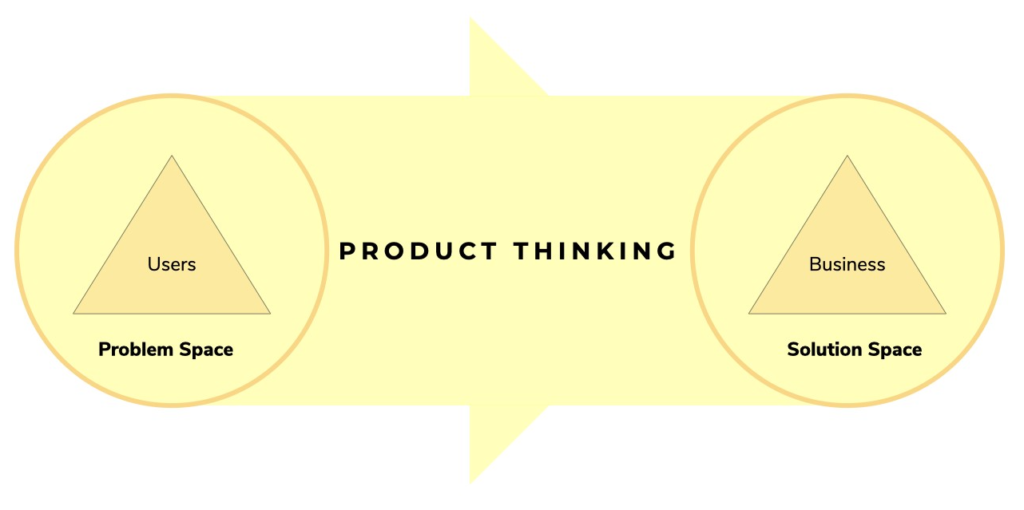Real World Product Management
The big thinking, quick winning, super squeezing, effortless ninja Product Manager
Let’s face it, building products is easier than ever. So why bother learning about product management? Because building products people want is more complicated than ever. It’s super easy to build products that nobody likes and that ultimately fail with lots of wasted blood, sweat, money, and tears – Take it from someone who has had their fair share of product failure and let me help you learn to be a better product manager.
There are a ton of resources out there that analyse the anatomy of a product manager. From thinking big, to executing like a ninja, to prioritising your quick wins and squeezing 80% of your value from just 20% effort… but you can do all of that and yet you can still fail, in fact you probably will fail even if you are a big thinking, quick winning, super squeezing, effortless ninja.
Failure is an inherent part of product management, in fact it’s one of the most important things you will do… fail, and fail again, and again. Successful products are often delivered by those that can persevere the longest. It’s a long painful road, with very little in the way of hope and lots of indicators pointing to give up. Essentially those that succeed can just take more pain than the rest of us.
Preparing for failure is a critical product manager skill. How do you keep going when every business and customer indicator says you should give up now? You make sure your product process is grounded with the most amazing foundations in a real problem, experienced by real people, really a lot.. You need to occupy that problem space, live in it, try and solve it with current products, explore other peoples experience of it, listen to them talk about it, dream about it, paste it all over your walls… I can not say this loudly enough. You need to own that problem. Like 24/7…
Never, ever, ever fall into the trap of owning the solution. Do not sidebar your friends at a wedding and tell them your amazing solution to said problem, don’t bore your partner or children with your dazzling solution to a problem… do not get hung up on a solution, your solution, even if you think you’ve seen something nobody else has… because occupying the solution space is a one way ticket to repeated failure and the worst sort of failure, failure that goes nowhere until, hopefully, you give up…
Let’s assume you have a deep understanding of the problem you’re solving. What do you do next as a product manager? You’re going to need to advocate for the user. This is one of the most critical product manager skills, and it means you need to be able to see things from other people’s perspective… you’re going to need to be an amazing storyteller, able to live and breathe characters, and if you can’t do this you’re not going to be a very good product manager, sorry but it’s an absolutely critical skill.
Why is seeing things from other people’s perspective crucial? Put simply you’re one person and you’ve identified a problem, but how many people in the world are like you? Not enough… So you need to start imaging the problem from other people’s perspective so you can develop a product more people are likely to want to use… hopefully you can see why this is fundamental? A successful product is one a lot of people use and want to use… an unsuccessful product is one only you and your team want to use.

Another important thing a product manager does is to identify and define what problems should be solved.
Project Managers need a deep understanding of the problem they are solving, advocate for the user, understand the business, empower design, create stability for engineers, and get everyone excited, whilst keeping them focused, and moving in the same direction.
Product Managers are in the super unique position that they have seen the product throughout the entire product development cycle. The product managers own a piece of the value stream that includes development and users.
Product Managers need to be in-tune with the challenges the product is facing across different functions and there’s no one else on the team that has this level of end-to-end visibility. Product Managers act as a central hub and they help the larger team to connect the dots.

But it’s a common misconception that PM’s are in a position to make all the decisions. PM’s rarely have any direct authority over the team. Meaning that PM’s don’t manage anyone working on the team that’s building the product.
It’s important to be able to influence without authority and guide the team to the the outcomes that you want. PM’s work with and align everybody to define what the product should do and why it should be built.

Product Managers are the spokesperson for their product. They should be able to answer almost any question about the product or know exactly where to get the answer. Product Managers keep the larger teams aware of plans, status, and roadblocks that the team’s facing. Product Managers also need to be able to persuade and secure buy-in from a variety of cross-functional teams and stakeholders – Product Manager’s don’t typically manage engineers or designers, Product Manager’s have to convince the team what they should be working on.

Product Manager’s can do this by clearly articulating the problem, why it matters and the impact. These things are tied to a goal that could be measured in terms of engagement, revenue, reduction in costs, new users or apps for rating… But you want to get the team excited about solving the problem. The best Product Managers can lead a group through a conversation and have the group reach the conclusion that the Product Manger was intending from the beginning.

No day is the same, no day is predictable. There are always things and fires the come up and need attention. It keeps it exciting. Some days might be out of the office meeting and interviewing users, other days might be going through a design sprint or working through a technical problem with the engineering team, or watching users going through a usability study, or going through a quarterly business review, or meeting with the support team to understand top issues, or getting an email from leadership asking why certain features is behind schedule and why the team isn’t working on another feature, or giving a presentation at a launch event and meeting with the press for interviews, or dealing with production issues, like when a server goes down or an iOS update breaks part of your app.
Be a problem solver, strategic, communicator, translator, company glue, information processor, fire fighter, negotiator…
Product Managers spend a lot of their time:
- Identifying/defining problems
- Creating a strategy
- Communicating
- Coordinating development
- Responding to fires
Allowing them to strategically answer some important questions:
- What are we building?
- Who are we building this for?
- Why are we solving this problem?
- Why are we building this specific solution?
- When are we building this?
- Application of product management frameworks, tools and methodologies across strategy, design, development and marketing
- Projects that take a software product through its entire lifecycle – discovery, design, development and delivery stages
- Experience the various challenges and opportunities that product managers face when launching both B2B and B2C products
- Product manager hard skills –problem solver, strategic, communicator, translator, company glue, information processor, fire fighter
- Cross-functional soft skills – ??
1. What is Product Management?
Taking a product from idea to launch
How to manage software product development within organisations – here
Identifying Problems
One of the most important roles of a Product Manager
- Define the problem for the team to solve
- Build a deep understanding of the user, their needs, and the space the product is in
- Conduct user research, market research, or competitive research, to leveraging existing product insights and data, or other inputs to create hypothesis and text them.
Creating Solutions
Once armed with an understanding of the problem, space and opportunity
- Build strategies for how to solve the problem through the creation of your product
- What the product does – high level overview of the product or feature and what it does
- Mapped to goals, objectives and KPIs
Planning
How to tackle the remaining work – by working closely with design and engineering to understand how much time is needed to both design and build the product. Program Managers can help to drive this conversation.
- Timelines
- Splitting into milestones – for larger products that will take a lot of time to ship (milestones will have related tasks that could be launched stand alone. Then layer on additional functionality and milestones on top until you get to the fully developed product.)
Core Team
Helpful to identify key points of contact across engineering and design that will work with you as a Product Manager.
- Product Manager
- 1 Designer
- 1 iOs Engineer
- 1 Android Engineer
- 1 Backend Engineer
This can vary as it is highly specific to a project.
UX Design
During UX Design, it’s important to work closely with design whilst they’re building out mocks and the spec for the user experience. The Product Manager provides context that can help inform design decisions. And help guide design decisions using your product intuition, but you might not always be correct.
- Mocks and specs
- Review and provide context
- Usability testing – large changes in the UX through usability testing to surface any issues users might run into with the product before development starts (not always possible otherwise use A to B testing)
Implementation
Once mocks have been finalised and the spec has been handed off to the engineering team, it’s time for implementation to begin. Check to see if the engineers understand all the requirements and if there’s anything that needs more definition or there is anything that is unclear.
- Are requirements clear?
- What edge cases (a problem or situation that occurs only at an extreme operating parameter) haven’t we thought of yet?
- Are we on track? (during the build process check in for regular status updates)
- Surface any roadblocks the team is running into and help to remove them (partner with a program manager to keep a pulse on how things are going)
Testing
Testing and validating that everything works correctly is an important final step. Work with the QA (quality assurance). Product Managers should go through their own product, report any bugs and make sure it meets the correct standards
- Review the test plan – outlines different scenarios that should be tested
- Steps to be taken, and the expected behaviour
- Does it work?
- What needs to be fixed?
Launch
For small launches, they might go out silently. For large launches, there will likely be some type of marketing and PR – update on website to more comprehensive launch event with press.
- Silent launch
- Blog post, website update, social media posts
- Big announce
For launches that have more risk, these might be phased over a few days or weeks. This gives you the chance to review data and make sure that there’s no negative impact on metrics. After the launch it’s really important to review how things went:
- Changes to key metrics
- User sentiment
- Teams feedback on the launch
- Impact
- What did we learn? What to do differently next time? (helpful in preventing mistakes next time)